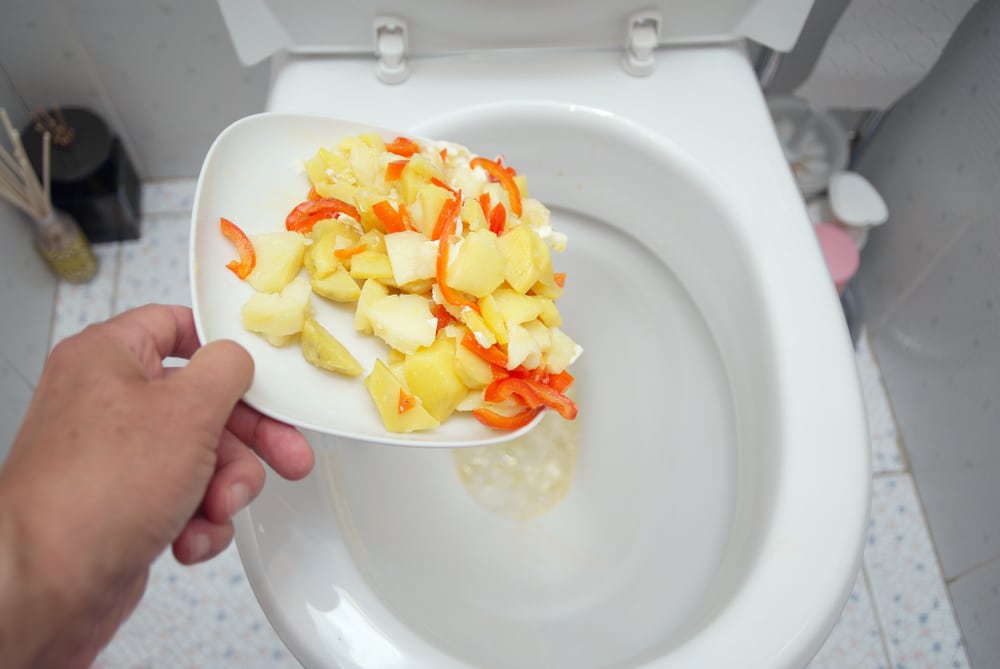What are your opinions concerning What Can Happen If You Flush Food Down the Toilet??

Introduction
Many individuals are typically faced with the problem of what to do with food waste, particularly when it comes to leftovers or scraps. One common inquiry that develops is whether it's all right to flush food down the bathroom. In this write-up, we'll delve into the reasons individuals might consider flushing food, the consequences of doing so, and different techniques for correct disposal.
Reasons individuals could consider flushing food
Lack of understanding
Some people might not understand the possible damage caused by purging food down the commode. They might wrongly believe that it's a safe method.
Ease
Flushing food down the commode may seem like a quick and easy service to dealing with unwanted scraps, particularly when there's no close-by trash bin available.
Laziness
In many cases, people might simply select to flush food out of sheer laziness, without thinking about the consequences of their actions.
Effects of flushing food down the bathroom
Environmental influence
Food waste that winds up in rivers can contribute to air pollution and harm water communities. Additionally, the water utilized to flush food can strain water resources.
Plumbing problems
Purging food can lead to stopped up pipes and drains pipes, causing pricey plumbing repair services and troubles.
Sorts of food that must not be purged
Fibrous foods
Foods with fibrous structures such as celery or corn husks can get entangled in pipes and create clogs.
Starchy foods
Starchy foods like pasta and rice can soak up water and swell, bring about obstructions in pipes.
Oils and fats
Greasy foods like bacon or food preparation oils must never ever be purged down the bathroom as they can solidify and create clogs.
Appropriate disposal techniques for food waste
Using a waste disposal unit
For homes outfitted with garbage disposals, food scraps can be ground up and flushed via the pipes system. However, not all foods appropriate for disposal in this way.
Recycling
Certain food packaging products can be recycled, lowering waste and lessening ecological impact.
Composting
Composting is a green method to throw away food waste. Organic products can be composted and utilized to enrich soil for gardening.
The value of correct waste monitoring
Decreasing environmental harm
Proper waste management techniques, such as composting and recycling, help decrease pollution and preserve natural resources for future generations.
Shielding plumbing systems
By preventing the technique of flushing food down the bathroom, home owners can protect against costly plumbing repair services and keep the stability of their pipes systems.
Final thought
In conclusion, while it might be alluring to purge food down the commode for benefit, it is necessary to comprehend the potential effects of this action. By taking on appropriate waste management practices and throwing away food waste sensibly, individuals can contribute to much healthier pipes systems and a cleaner setting for all.
FLUSH FOOD DOWN THE TOILET?
FLUSHING FOOD CAN CAUSE BLOCKED DRAINS IN YOUR HOME
All of the plumbing fixtures in your home are connected to the same sewer pipe outside of your home. This outdoor sewer pipe is responsible for transporting all the wastewater from your home to the Council sewer mains. Even small pieces of food that go down the kitchen sink can cause problems for your sewer. It should therefore be obvious that flushing larger bits of food, such as meat, risks a clog in either the toilet itself or the sewer pipes. Flushing greasy food is even more problematic because oil coagulates when it cools, coating the interior lining of your pipes.
THE TOILET IS NOT A BIN
Food isn’t the only thing that people shouldn’t be flushing down the toilet. People use the toilet to dispose of all kinds of things such as tampons, makeup wipes, dental floss, kitty litter and even underwear. Water goes to great lengths to educate residents about the high costs and stress placed on wastewater treatment systems simply from people flushing the wrong stuff down the toilet. It costs taxpayers millions of dollars each year, and homeowners thousands in blocked drain repairs.
FLUSHING FOOD IS A WASTE OF WATER
Flushing food is a waste of our most precious resource - water. In June this year Level 1 water restrictions were introduced to protect water supply from drought conditions. Much of New South Wales continues to be affected by prolonged drought with recent figures revealing up to 97 per cent of the state remains in drought. Depending on whether you have a single or dual flush toilet, every single flush uses between five and 11 litres of water. In the current climate this is a huge amount of water to be wasting on flushing food that should be placed in the bin (or better yet, the compost).
https://www.jabplumbingsolutions.com.au/blog/can-you-flush-food-down-the-toilet

I ran across that entry about Flushing Food Down the Toilet? while doing a lookup on the web. Sharing is good. Helping others is fun. Bless you for your time. Kindly visit our site back soon.
Apply Now
Comments on “Are You Able to Dispose of Food in the Toilet?”